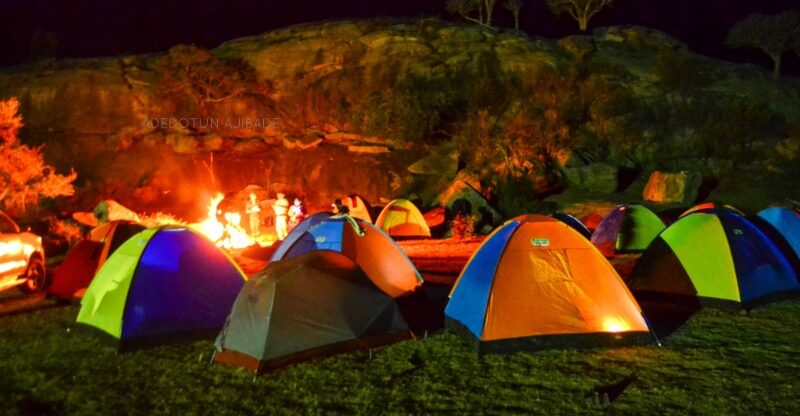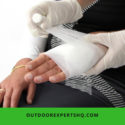Camping Can Be Dangerous! Here Are 6 Survival Items You Must Carry
There are a few survival items you should always take with you, whether you’re hiking, camping, or biking. The funny thing is; most people never even consider carrying them.
And the problem is:
Most people will only realize how helpful they are when they’ve got themself in a situation where they need it.
Ten years ago, I was working as an outdoor activity instructor, and one of the lessons I would teach was camping and survival. Over the years, I learned that they go hand in hand… almost.
Having a survival kit is about being ready for the worst while using as few items as possible; ideally, you’re trying to pack light but thrive out in the wild.
So, in this article, I wanted to show you some of the survival items you shouldn’t go camping without. You never know; some of these items might save your life on future camping expeditions.
Let’s take a look:
6 Survival Items You Must Carry While Camping
As you’ll see in the following section, I’ve tried to avoid standard camping materials such as tents, sleeping bags, and torches.
Instead, I wanted this article to introduce you to the survival items you might not have even thought about taking with you.
And here they are:
1. Water Filtering Bottle
While taking a water bottle might be standard practice for many people, you might not have a water filtering bottle. And these can be a real game changer.
When you’re using a standard water bottle, you have to rely on the fact that you have access to clean drinking water. But in a survival situation, this is something that you can not always guarantee.
And this is why a water filtering bottle takes your game to the next level. The bottle includes a little water filter inside, which can remove 99% of the bacteria in a water source.
And this means you can drink water from any stream or river without getting sick or getting the runs. Of course, I’d still use the bottle cautiously and ensure the water I’m putting inside looks clean.
2. Flint & Steel
Another great item to take with you is a flint & steel. Some of you might carry lighter or matches, and that’s fine… until they get wet.
The problem is:
When matches or lighters get wet, they don’t work. And this can be an absolute nightmare if it gets cold outside and you can’t build a fire.
Enter the flint & steel:
The fantastic thing about flint and steels is it doesn’t matter how wet they get; you’ll always be able to produce a spark to get a fire going.
If I had to choose one bad thing about them, it has to be that they’re not easy to use, so you’ll have to practice if you want to get the hang of it.
3. Emergency Shelter
Yes, you will have your tent with you, but what happens when you go for a hike, and someone injures themselves, or the weather starts turning bad?
Or even worse, what if you get lost in the wild and can’t find your way back?
An emergency shelter does exactly what it says; it gives you a place to shelter when you’re in an emergency.
So, what are they?
An emergency shelter is like a giant (usually orange) tarp that allows up to eight people to sit under it to shelter. The tarp protects you from the rain and will keep you warm from the cold outside.
I mentioned that they are usually orange, and this is for a good reason. Orange is the international rescue color and stands out in a forest, meaning people will know you’re looking for help.
4. Camping Knife
Many people will bring a small camping knife with them on their adventure. But I still see many people who don’t take one with them.
And this is a huge shame!
Camping knives are quite possibly the most important tool you can bring, thanks to their versatility. You can use them for cooking, hunting, cutting wood, making kindling, and so much more.
You don’t need anything fancy, and you can easily find a camping knife under $50. It just needs to be sharp and easy to handle.
5. First Aid Supplies
Preparing for an emergency is the number one rule of survival, and you can’t do that without a first aid kit. Even while you’re camping, things can go wrong.
You might cut yourself on a branch, get a blister from hiking, or even worse. But being able to treat it while you’re out in the wild can be a precious commodity.
It doesn’t have to be fancy; the chances of having to give yourself stitches are slim (To be honest, you wouldn’t even know how). A few bandages, plasters, and alcohol wipes can make a huge difference.
6. Navigation Materials
I’ve been hiking and camping for quite some time now, and it still amazes me how many people neglect to bring a map and compass.

Maybe we’ve become too reliant on our cell phones? Or perhaps, reading a map compass isn’t taught enough in schools?
But…
What happens if your cell phone runs out of service, or even worse, has no battery?
Well, it will usually result in you being lost until someone finds you.
Knowing how to read a map and compass is a life skill everyone should learn… You never know when you’re going to need it. It will result in you being very lost until someone finds you.
Final Thoughts & Takeaways
Adding a few survival items to your camping gear doesn’t take a lot of extra planning, and it doesn’t even add much weight to your backpack.
But, it can be life-saving if you’re ever in a situation where you need it to survive. Of course, I pray you’re never put in this situation, but it always pays to be prepared.
I imagine that 90% of people who have been in a survival situation never actually planned to be there. Some prior preparation can go a long way when you’re camping in the wild, so make sure you do yours.









